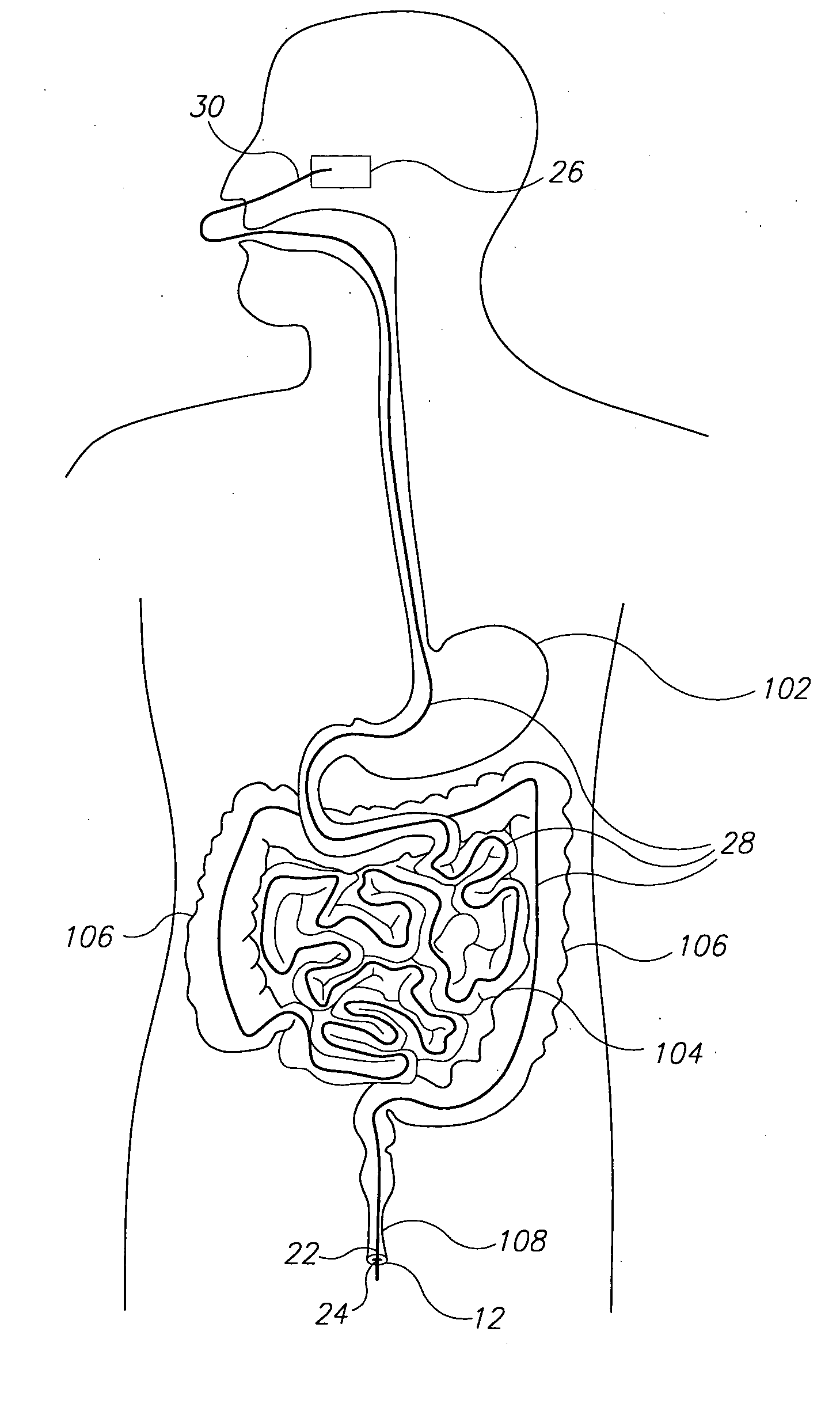System and method for guiding of gastrointestinal device through the gastrointestinal tract
a gastrointestinal device and gastrointestinal tract technology, applied in the direction of guide wires, sensors, medical science, etc., can solve the problems of limited diagnostic and therapeutic endoscopic access to the small intestine beyond the duodenum, high technical requirements for endoscopy, and patient discomfor
- Summary
- Abstract
- Description
- Claims
- Application Information
AI Technical Summary
Problems solved by technology
Method used
Image
Examples
example 1
In Vitro Testing on Pig Intestinal Section
[0083]A wire of diameter 0.034 cm was used to determine maximal force needed for a guidewire to cause a tear of the intestinal wall. The intestinal section was cut in its longtitudinal axis, laid open on a rigid surface, and fixed. The wire was then manually pressed and pulled over the luminal (mucosal) side of the intestinal section several times, with gradual increase of manual pressure applied until maximal force was exerted. No macroscopic tear of the intestinal wall was observed.
example 2
In Vivo Testing in Pig
[0084]22 m of wire of 0.034 cm diameter were rolled and inserted into an oval shaped introducing element measuring 30×11 mm. The wire was composed of polyamide and the introducing element was composed of polycarbonate. The wire was rolled upon itself such that pulling on its proximal end resulted in its unwinding in an inside-out fashion. The proximal end was fixed to the inside wall of the introducing element. The introducing element was provided with an outlet on one side of its longitudinal axis, through which 30 cm of wire were threaded and left outside of the introducing element.
[0085]A 60 kg female pig was studied, after 24 hours food fast (water ad libitum).
[0086]The pig was anesthetized as follows:
Pre-medication: Ketamine HCl 10 mg / kg+Xylazine 1-2 mg / kg IM
[0087]After_vain canulation diazepam 10 mg / pig-IV.
Induction: Isoflorane 5% mask
Maintenance: After intubation, Isoflorane 1-3% delivered via positive pressure ventilation (IPPV) utilizing 100% oxygene (...
PUM
 Login to View More
Login to View More Abstract
Description
Claims
Application Information
 Login to View More
Login to View More - R&D
- Intellectual Property
- Life Sciences
- Materials
- Tech Scout
- Unparalleled Data Quality
- Higher Quality Content
- 60% Fewer Hallucinations
Browse by: Latest US Patents, China's latest patents, Technical Efficacy Thesaurus, Application Domain, Technology Topic, Popular Technical Reports.
© 2025 PatSnap. All rights reserved.Legal|Privacy policy|Modern Slavery Act Transparency Statement|Sitemap|About US| Contact US: help@patsnap.com



